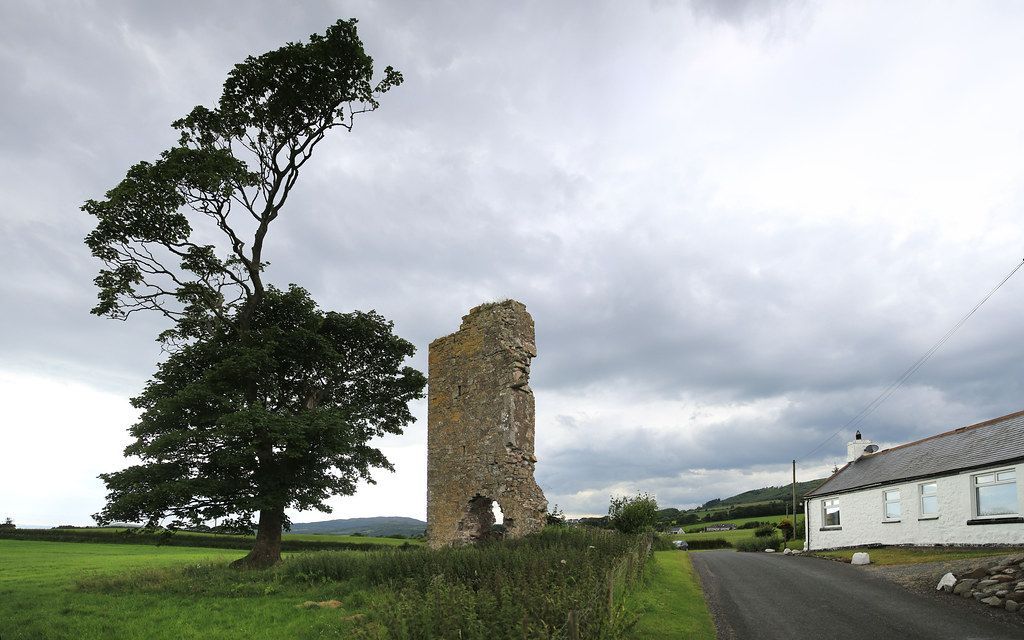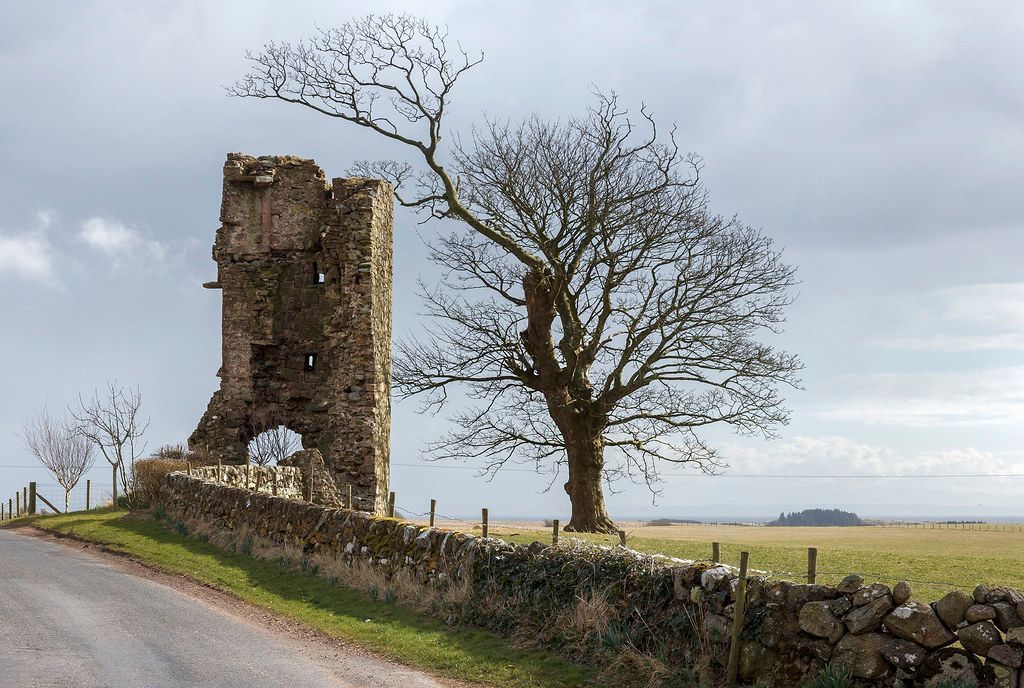Wreath's Tower
It is not known who built Wreaths Tower, nor precisely when, and there is not enough of the original fabric left to date the tower positively. However, James, Earl of Morton and sometime Regent of Scotland in the minority of James VI, and traditionally associated with the tower, was known to have been an active builder. However, the use of the word ‘castle' only appears on charters after 1580and the first depiction of it is on Gordon's 1636 transcript of Pont's 1595 map (contra Maxwell-Irving, 2000, Wreaths is not shown on Pont's original map).
Fragmentary portions of the south and east walls survive, with the well for a wheel staircase in the south-east angle, and an adjacent doorway in the south wall. The tower was oblong in plan, with the main axis aligned east-west. The doorway surround does not survive, but is was drawn in the 19th century, and had a semi-circular head. The basement was vaulted, and the height of the stairwell indicates that it was at least four storeys high.
In 1621 Robert, 9th Lord Maxwell received the lands and barony of Preston ‘ with the castles and manor places'. A ‘James Maxwell of Wraithes' is recorded in 1655. After the 2nd Earl of Nithsdale founded preston town in 1663, it is thought that Wreaths was superceded as the principal residence by a newer building at Cavens. In 1667 John Corbet, the former bailie in Dumfries held sasine on the lands as ‘John Corbet of Wreaths', but in 1734 it was back with the Maxwells, and was held by Mary and Willielmina Maxwell in 1742. Around 1773 the lands of Preston, Wreaths and Cavens were bought by Richard Oswald of Auchencruive, Ayrshire, whose family held it throughout the 19th century.

View of the tower looking towards Mainsriddle

